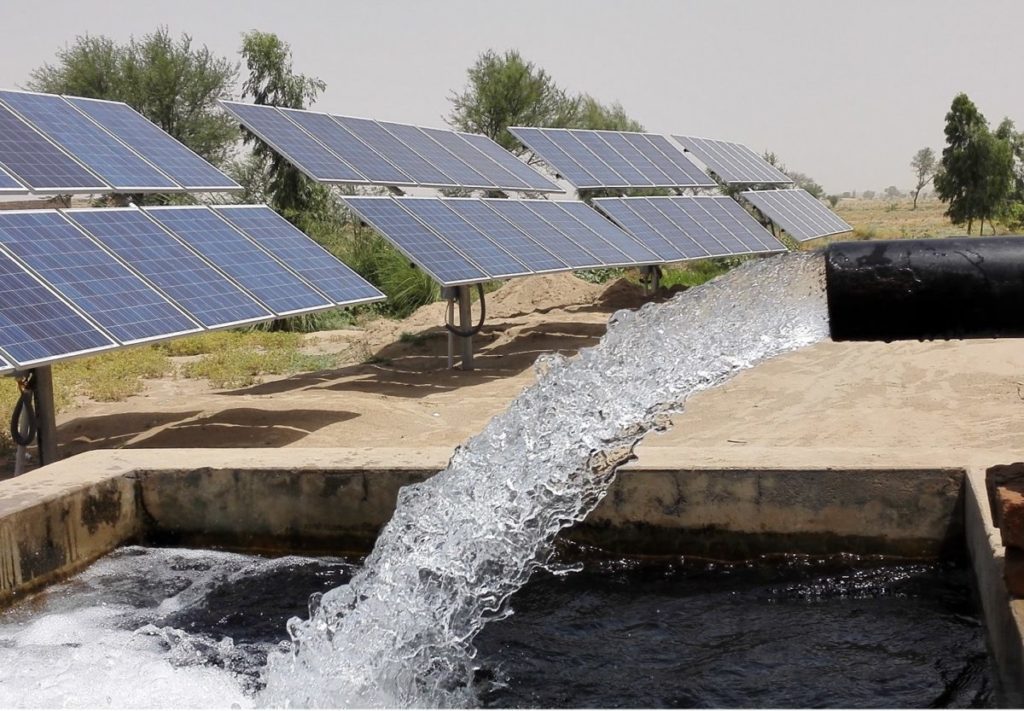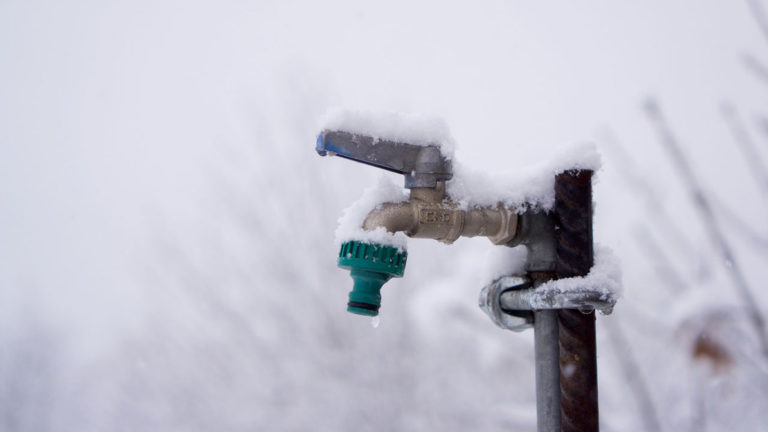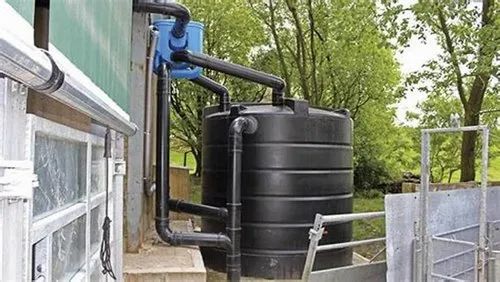If you’re considering using an electric pump to access water from your off-grid well, it’s important to choose the right one to ensure reliable and efficient performance.
With so many options available on the market, navigating the selection process can be overwhelming.
That’s why this guide was created – to provide you with actionable information on how to select the perfect electric pump for your off-grid well.
From understanding your water needs to considering factors like energy efficiency and maintenance costs, we’ll walk you through each step of the process so that you can make an informed decision and enjoy a reliable source of fresh drinking water from your well.
Let’s get started!
Determine your water needs
Before selecting an electric pump, it’s important to determine your water needs. Consider how many people will be using the water, how much water you need for irrigation, and how often you need to access the water.
Consider the number of people who will be using the water, as well as the amount of water needed for irrigation.
Think about how often you need to access the water, as this will help you determine the appropriate pump size and power output.
For example, if you have a large family and plan to use the water for irrigation, you’ll need a more powerful pump to meet your demands.
On the other hand, if you only need water for a small garden, a smaller pump may be sufficient.
Moreover, it’s important to consider the frequency of use, as this will impact the pump’s duty cycle.
If you need to access the water frequently, you’ll want a pump that can handle a high duty cycle, while if you only need to access the water occasionally, a lower duty cycle pump may be more appropriate.
Overall, determining your water needs before selecting an electric pump is important to ensure you choose the right pump for your specific requirements, saving you money and ensuring you have the necessary water for your needs.
Consider the location and depth of your well
The location and depth of your well will affect the type of pump you need. For example, if your well is deep, you may need a submersible pump, while a shallow well may require a jet pump.
The location and depth of your well play a critical role in determining the type of pump that will be most effective.
For example, if your well is located at a shallow depth, a jet pump may be the best option.
Jet pumps are typically used for wells that are 100-200 feet deep and are designed to pull water from the surface down to the pump.
They work by using a high-pressure stream of water to create a vacuum that draws water up from the well.
However, if your well is deeper than 200 feet, a submersible pump may be more suitable.
Submersible pumps are designed to be submerged in the water and can handle deeper wells, typically up to 1,000 feet deep.
These pumps work by using an electric motor to power a pump that is submerged in the water, allowing for the effective extraction of water from deeper wells.
It’s important to consult with a professional well drilling contractor to determine the best pump solution for your well.
Choose the right pump type
There are several types of electric pumps available, including jet pumps, submersible pumps, and centrifugal pumps. Each type of pump has its own advantages and disadvantages, so it’s important to choose the right type for your needs.
There are three main types of electric pumps available in the market: jet pumps, submersible pumps, and centrifugal pumps.
Jet pumps are typically used for shallow wells and are known for their high efficiency and reliability.
They work by using a motor to create pressure in the well and push water up to the surface.
Submersible pumps, on the other hand, are used for deeper wells and are designed to be submerged in the water they are pumping.
These pumps use a motor to drive a propeller that pushes water up to the surface.
Centrifugal pumps are the most common type of pump and are used for a variety of applications, including residential water supply, irrigation, and industrial processes.
These pumps use a spinning impeller to increase the velocity of the water, which creates pressure and pushes the water through the system.
When choosing the right type of electric pump for your needs, it’s important to consider factors such as the depth of the well, the volume of water you need to pump, and the pressure required for your specific application.
Jet pumps are ideal for shallow wells and are known for their high efficiency and reliability, while submersible pumps are better suited for deeper wells.
Centrifugal pumps are versatile and can be used for a variety of applications, but may not be as efficient as jet or submersible pumps for certain applications.
By considering these factors and choosing the right type of pump for your needs, you can ensure that your water supply system is efficient, reliable, and meets your specific requirements.
Look for energy efficiency
Off-grid systems often rely on renewable energy sources like solar or wind power. Look for pumps that are energy efficient and compatible with renewable energy systems.
When transitioning to off-grid living, it’s essential to consider the energy efficiency of your pumping system.
Off-grid systems often rely on renewable energy sources like solar or wind power, and selecting an energy-efficient pump can help optimize your system’s performance and reduce your overall energy consumption.
Look for pumps that are specifically designed for use with renewable energy sources and are optimized for low power consumption.
These pumps can help you conserve energy, reduce your carbon footprint, and save money on your energy bills over time.
In addition, many energy-efficient pumps are now equipped with advanced features like variable speed drives, which allow the pump to adjust its speed based on your water demand, further optimizing energy use and reducing waste.
By selecting an energy-efficient pump, you can ensure that your off-grid system operates at its best and provides you with reliable, sustainable water access for years to come.
Check the flow rate and pressure
The flow rate and pressure of the pump will determine how quickly and efficiently water is delivered to your home or farm. Make sure the pump you choose has enough flow rate and pressure to meet your needs.
The flow rate and pressure of the pump are critical factors in determining the efficiency and effectiveness of water delivery to your home or farm.
The flow rate refers to the volume of water that the pump can deliver in a given time, typically measured in gallons per minute (GPM).
The pressure, on the other hand, refers to the force exerted by the water as it is pumped, typically measured in pounds per square inch (PSI).
A higher flow rate and pressure pump will be able to deliver more water quickly and efficiently, making it an ideal choice for larger homes or farms with more demanding water needs.
However, a pump with too high of a flow rate and pressure may be unnecessary and wasteful, leading to increased energy consumption and higher costs.
Therefore, it is essential to select a pump that has a flow rate and pressure that meets your specific needs, taking into consideration the size of your home or farm, the number of occupants, and the type of water use.
For example, a household with multiple bathrooms and a large garden may require a higher flow rate and pressure than a small, single-bathroom home.
By carefully selecting the right pump for your needs, you can ensure that you have a reliable and efficient water supply for all your household or farming needs.
Consider the power source
If you’re using renewable energy sources like solar or wind power, make sure the pump is compatible with your power source. Some pumps may require more power than others, so it’s important to choose a pump that fits your energy system.
When incorporating renewable energy sources like solar or wind power into your water pumping system, selecting a pump that is compatible with your power source is important.
Some pumps may require more power than others, so it’s important to choose a pump that fits your energy system.
For instance, if you’re using solar power, you’ll need a pump that can operate efficiently with the amount of power your solar panels can provide.
Some pumps may require more frequent startup and shutdown, which can be challenging for renewable energy sources that are not as consistent as traditional grid power.
By carefully considering the compatibility of your pump with your renewable energy source, you can ensure optimal performance and efficiency, saving you time, money, and resources in the long run.
Look for durability and reliability
A reliable pump is essential for providing a consistent water supply. Look for pumps that are built with durable materials and have a reputation for reliability.
A reliable pump is important for ensuring a consistent water supply, and it’s important to choose a pump that is built with durable materials and has a reputation for reliability.
When selecting a pump, look for ones made from high-quality materials such as stainless steel or cast iron, which can withstand the rigors of daily use and harsh water conditions.
Opt for pumps with robust motors and mechanisms that are designed to last, as these will provide the most reliable performance over time.
Moreover, it’s important to consider the pump’s specifications, such as its flow rate, pressure, and voltage requirements, to ensure that it’s compatible with your water system and can meet your needs.
Look for pumps with a proven track record of reliability, as evidenced by positive customer reviews and long-standing manufacturer warranties.
By investing in a reliable pump, you can rest assured that your water supply will be consistent and reliable, providing peace of mind and protecting your home or business from costly repairs and downtime.
Consider the cost and maintenance
Pumps can be expensive, so it’s important to consider the cost of the pump and any potential maintenance needs. Some pumps may require more maintenance than others, so it’s important to choose a pump that fits your budget and needs.
Choosing the right pump for your aquarium can be a critical decision, as it can significantly impact the health and well-being of your fish and other aquatic inhabitants.
One important consideration is the cost of the pump and any potential maintenance needs.
While some pumps may be more expensive upfront, they may require less maintenance over time, resulting in long-term cost savings.
On the other hand, some pumps may be more affordable but require more frequent maintenance, which can be time-consuming and costly.
When evaluating the cost of a pump, it’s important to consider not only the initial purchase price but also any ongoing maintenance costs, such as replacement parts, labor, and energy expenses.
For example, some pumps may require more frequent cleaning or filter changes, which can add up over time.
Other pumps may have more complex design and require more frequent maintenance, such as replacing seals or bearings, which can be more expensive and time-consuming.
To ensure that you choose a pump that fits your budget and needs, it’s important to research and compare different models, taking into account their features, capabilities, and maintenance requirements.
It’s essential to consider the specific needs of your aquarium, such as the size of the tank, the number of fish, and the type of water being pumped.
By carefully evaluating these factors, you can select the most appropriate pump for your aquarium, minimize maintenance costs, and ensure the health and well-being of your aquatic inhabitants.
Want More? Dive Deeper Here!
Hey there! If you’re the type who loves going down the rabbit hole of information (like we do), you’re in the right spot. We’ve pulled together some cool reads and resources that dive a bit deeper into the stuff we chat about on our site. Whether you’re just killing time or super into the topic, these picks might just be what you’re looking for. Happy reading!






